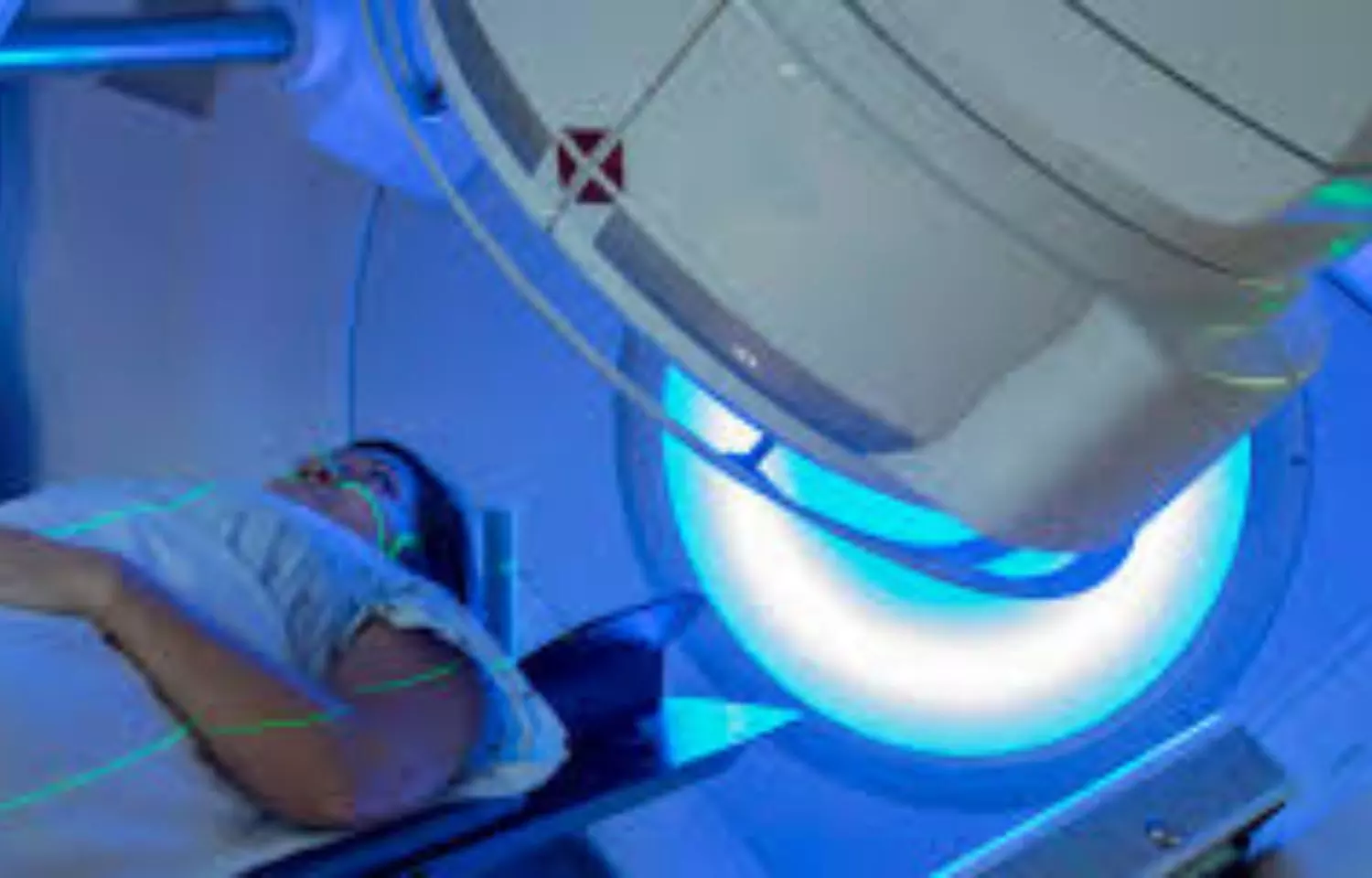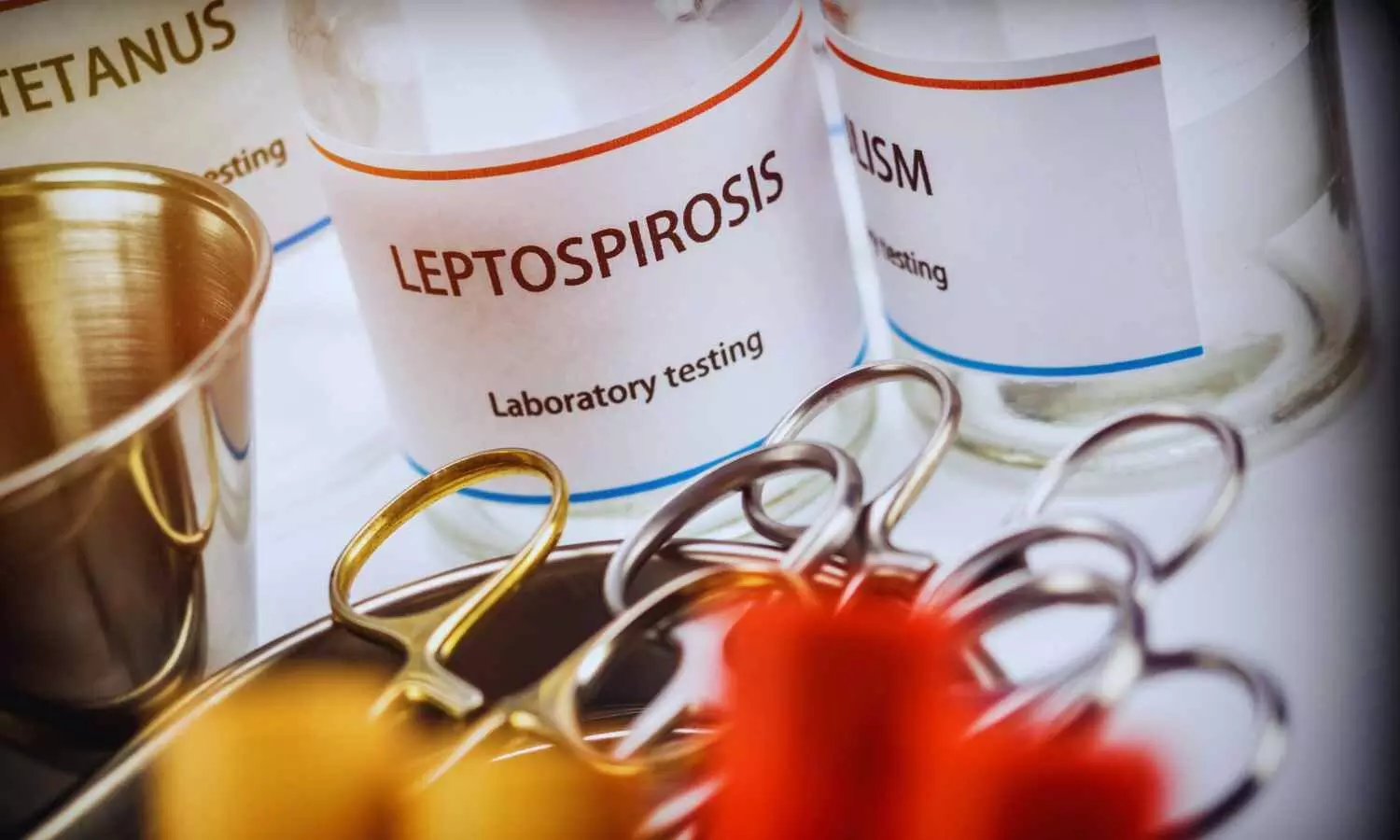Whooping cough can be fatal in young infants, experts warn
Powered by WPeMatico
Powered by WPeMatico
Powered by WPeMatico
Powered by WPeMatico

Radiation therapy could be an underused tool to reduce pelvic relapse risk for patients with locally advanced, muscle-invasive bladder cancer, according to results of a new phase III randomized trial. In the study, moderate doses of radiation therapy after bladder removal surgery sharply cut the rates of cancer returning in the pelvis without adding serious side effects. Findings of the Bladder Adjuvant RadioTherapy (BART) trial conducted at centers across India will be presented today at the American Society for Radiation Oncology (ASTRO) Annual Meeting.
“This is one of the first studies and the largest randomized trial to show that post-operative radiation therapy can meaningfully reduce pelvic relapses in bladder cancer,” said Vedang Murthy, MD, principal investigator of the trial and a professor and radiation oncologist at Tata Memorial Hospital in Mumbai. “Pelvic relapse can be devastating for patients – extremely painful and almost impossible to treat. Our research shows that modern radiation therapy offers a safe way to prevent many of these recurrences and improve patients’ quality of life.”
Locally advanced, muscle-invasive bladder cancer occurs when a tumor grows beyond the inner urothelial lining of the bladder into its muscle wall. Each year, roughly 20,000 to 25,000 people in the U.S. and more than half a million worldwide are diagnosed with muscle-invasive disease. Standard treatment for these patients typically involves radical cystectomy – surgical removal of the bladder – and chemotherapy, but up to one-third develop new pelvic tumors within two to three years.
Dr. Murthy and colleagues previously reported findings showing that adding intensity-modulated radiation therapy (IMRT) after cystectomy for patients with high-risk, muscle-invasive bladder cancer was safe and caused minimal side effects. The new analysis evaluated whether post-operative radiation therapy could also reduce cancer recurrence in the surgical bed and surrounding pelvic region.
The BART trial enrolled 153 patients with locally advanced, urothelial muscle-invasive bladder cancer from 2016 to 2024. Participants were randomly assigned to receive either post-operative/adjuvant radiation therapy (50.4 Gy in 28 fractions, n=77) or observation alone (n=76). All patients underwent radical cystectomy, and nearly all also received chemotherapy before (71%) or after (20%) surgery.
The people who enrolled in the trial were at high risk for recurrence: 62% had tumors that extended outside the bladder wall (pT3–T4), 41% had lymph node involvement (pN+), and 28% displayed variant tumor subtypes.
Patients who received radiation therapy after surgery experienced significantly fewer pelvic recurrences. Over a median follow-up of 47 months, 8% of patients in the radiation group experienced a locoregional recurrence, compared to 26% of those in the observation group (p=0.006). Two-year locoregional recurrence-free survival, the study’s primary endpoint, was 91.2% with radiation therapy versus 76.4% without (p=0.004).
“Bladder cancer is aggressive, and surgery and chemotherapy alone are not enough to prevent pelvic recurrence,” said Dr. Murthy. “But in our trial, very few people who received radiation had a locoregional relapse within two years.”
Disease-free survival (DFS), which measures time to recurrence anywhere in the body, also favored the radiation arm (77.6% vs. 64.4%, p=0.07). But rates of distant metastases were similar in both groups, affecting nearly one third of patients and reflecting the systemic nature of this cancer. Most people diagnosed with muscle-invasive bladder cancer ultimately die from distant metastases, explained Dr. Murthy, “but it does not matter where the cancer returns – whatever relapse we can reduce, we must reduce.”
Two-year overall survival was higher in the radiation arm (68% vs. 57%), though the difference was not statistically significant (p=0.4), which Dr. Murthy attributed to the small sample size. He said the next step for his team is a prospective meta-analysis combining BART data with large, randomized trials from France and Egypt to further assess safety and benefit in survival outcomes.
Side effect rates were low and similar between the groups. Severe late side effects were experienced by 8.5% of patients in the radiation arm and 10.5% in the observation arm (p=0.6). Subgroup analyses also suggested an additional benefit of radiation for patients with larger tumors (T3-4) and node-positive disease, pointing to potential directions for personalized bladder cancer treatment.
Dr. Murthy said he hopes these results will spur greater use of radiation therapy for bladder cancer. ”BART shows that modern radiation techniques allow us to deliver highly targeted treatment with fewer complications than in the past. Radiation therapy is already used safely after surgery for gynecologic cancers in the same anatomically complex region, suggesting it could also become a standard option for high-risk bladder cancer following cystectomy,” he said.
He noted that a limitation of the study is that no patients received immunotherapy, which is becoming standard in bladder cancer treatment to improve survival. Recent advances in immunotherapy highlight “a clear need” to study its use alongside post-operative radiation for patients with high-risk disease, said Dr. Murthy. “The two treatments act differently, with distinct functions and side effect profiles, and there’s no reason we shouldn’t be combining them,” he said.
Reference:
Radiation therapy after surgery safely reduces pelvic relapse risk from locally advanced, muscle-invasive bladder cancer, American Society for Radiation Oncology, Meeting: American Society for Radiation Oncology (ASTRO) 2025Annual Meeting.
Powered by WPeMatico
Powered by WPeMatico
Powered by WPeMatico

In a new study, Yale School of Medicine (YSM) researchers unveiled a novel diagnostic method for detecting leptospiral virulence-modifying (VM) proteins in the blood and urine of hamsters, an advance that could pave the way for early diagnosis of the tropical disease leptospirosis in humans and improved treatment options. The findings were published in the journal Microbiology Spectrum.
Found around the world, leptospirosis affects approximately 1 million people annually, with nearly 60,000 fatalities. The disease is caused by the bacterium Leptospira and is spread through the urine of infected animals. Despite the potential of the disease to cause severe illness when left untreated, early diagnosis has been a significant challenge due to the lack of sensitive and specific diagnostic methods.
The research, led by Yale’s Dr. Joseph M. Vinetz and his team, in collaboration with Luna Bioscience, a company founded by Vinetz to develop vaccines for emerging global infectious diseases, has led to the development of a monoclonal antibody (mAb)-based capture immunoassay. This assay detects VM proteins, a recently identified family of leptospiral proteins crucial for disease pathogenesis.
“We have long known that leptospirosis severely impacts multiple organ systems, leading to conditions like jaundice, acute kidney injury, and pulmonary hemorrhage,” said Vinetz, a professor of medicine (infectious diseases) at YSM. “Our discovery of these VM proteins as circulating exotoxins gives us a specific target for both diagnostics and potential therapeutic interventions.”
Leptospirosis is the first systemic bacterial disease mediated by a toxin — such as tetanus, botulism, or diphtheria — that has the potential for rapid antigen detection by a novel test, he added.
The research lays the groundwork for developing rapid, inexpensive diagnostics that can be used in resource-limited settings, where leptospirosis is most prevalent, according to Vinetz, who is also a professor of epidemiology (microbial diseases) at the Yale School of Public Health. The novel diagnostic method holds promise for transforming leptospirosis management globally, he said.
“By enabling early detection, health care providers can initiate timely treatments, potentially saving lives and mitigating disease severity,” Vinetz said. “Furthermore, understanding the role of VM proteins in disease pathogenesis could lead to new therapeutic targets and vaccine development opportunities.”
Reference:
Chaurasia R, Jacobs A, Tang J, Dong S, Vinetz JM. 0. Development of leptospiral virulence-modifying protein detection assay: implications for pathogenesis and diagnostic test development. Microbiol Spectr 0:e00018-25. https://doi.org/10.1128/spectrum.00018-25
Powered by WPeMatico

A new study published in the Journal of the American Medical Association revealed that cognitive behavioral therapy for insomnia (CBT-I) is safe and highly effective in improving sleep among individuals living with chronic diseases like cancer, cardiovascular conditions, chronic pain, and stroke.
Insomnia often exhibits compounding physical symptoms and reducing quality of life. Standard treatment guidelines recommend CBT-I as the first-line intervention, but concerns have lingered about its suitability for patients already managing heavy disease burdens.
This review of data across 67 randomized clinical trials (RCTs) involved 5,232 participants, to evaluate the efficacy, safety, and patient acceptability of CBT-I in chronic disease populations. The studies included patients with a wide spectrum of conditions, from irritable bowel syndrome and chronic pain to cancer survivors and stroke patients.
Insomnia severity decreased significantly, with a large effect size (g = 0.98). This suggests patients not only reported sleeping better but also experienced meaningful reductions in their insomnia symptoms. Sleep efficiency improved with a moderate effect size (g = 0.77).
Sleep onset latency, or how long it takes to fall asleep, was shortened with a moderate effect size (g = 0.64). The patients with chronic disease who completed CBT-I not only fell asleep faster and stayed asleep longer but also reported markedly better sleep quality overall.
The review also assessed whether outcomes varied depending on delivery methods or patient characteristics. While results were consistently positive across disease groups, longer treatment durations produced better improvements in both sleep efficiency and time to fall asleep. This suggests that maintaining therapy over an extended period could maximize benefits.
The dropout rates averaged just 13.3%, which highlighted that most participants found the therapy manageable and worthwhile. Moreover, adverse effects linked directly to CBT-I were rare, reassuring clinicians that the therapy poses minimal risk. Overall, these results show that CBT-I is just as effective for people with chronic diseases as it is for the general population struggling with insomnia. This is an important step forward in integrated care, particularly since poor sleep often worsens chronic disease outcomes.
Source:
Scott, A. J., Correa, A. B., Bisby, M. A., Chandra, S. S., Rahimi, M., Christina, S., Heriseanu, A. I., & Dear, B. F. (2025). Cognitive behavioral therapy for insomnia in people with chronic disease: A systematic review and meta-analysis. JAMA Internal Medicine. https://doi.org/10.1001/jamainternmed.2025.4610
Powered by WPeMatico

A new study published in the journal of Arthritis & Rheumatology revealed that a considerable elevated risk of severe infection across anatomic locations and a variety of pathogen types is linked to rheumatoid arthritis-associated lung disease (RA-LD), especially RA-associated interstitial lung disease (RA-ILD).
An estimated 1% of people in the US and northern European nations suffer with rheumatoid arthritis (RA), a systemic inflammatory disease. Clinically, RA may virtually impact any lung compartment, including the pleura, which can cause pleural inflammation and/or effusions; small and large airways; the pulmonary vasculature; and the parenchyma, which can show up as rheumatoid nodules or ILD. Thus, this study examined the relationship between the risk of significant infection and RA-LD.
Using the MGB Biobank (Boston, Massachusetts), researchers performed a retrospective cohort study that matched RA-LD patients by age, sex, and length of RA to RA patients without lung disease (RA-no LD). Medical record review and chest imaging for clinically evident RA-associated bronchiectasis (RA-BR) and/or RA-ILD were used to confirm RA-LD patients.
Serious infection was the main outcome taken for this study. To account for competing risk of mortality, incidence rates and propensity score-adjusted sub distribution hazard ratios (sdHR) were computed using the Fine and Gray models.
In comparison to 980 RA-no LD comparators, 221 RA-LD patients (151 RA-ILD and 70 RA-BR) had a substantially increased risk of severe infection (55.8 vs. 25.8 per 1,000 person-years, sdHR 1.60, 95%CI 1.20-2.12). For RA-ILD patients (sdHR 1.79, 95%CI 1.33-2.41), the elevated risk persisted, but not for RA-BR cases (sdHR 1.19, 95%CI 0.72-1.97).
RA-LD was linked to a number of pathogen species, including bacteria, fungi, viruses, and mycobacteria. The most frequent anatomic locations of infection in RA-LD were the lungs, skin and soft tissues, and the ears, nose, and throat. Certain infections, such as influenza virus, Staphylococcus, pseudomonas, respiratory syncytial virus, and nontuberculous mycobacteria, were more common in RA-LD patients, especially among RA-BR.
Overall, serious infections involving several body parts and a broad spectrum of microorganisms are significantly more likely to occur in patients with rheumatoid arthritis-related lung disease, particularly interstitial lung disease. In particular, an increased risk of lung infections is related with bronchiectasis associated with RA (RA-BR).
Reference:
Zhang, Q., Qi, Y., Wang, X., McDermott, G. C., Chang, S. H., Chaballa, M., Khaychuk, V., Paudel, M. L., & Sparks, J. A. (2025). Risk of serious infection in patients with rheumatoid arthritis-associated interstitial lung disease or bronchiectasis: A comparative cohort study. Arthritis & Rheumatology. https://doi.org/10.1002/art.43338
Powered by WPeMatico

China: Severe emphysema, quantitatively assessed using high-resolution computed tomography (HRCT), is a strong independent predictor of coronary artery disease (CAD) in patients with chronic obstructive pulmonary disease (COPD), a new retrospective study has found. The study was published online in the International Journal of Chronic Obstructive Pulmonary Disease.
Powered by WPeMatico
